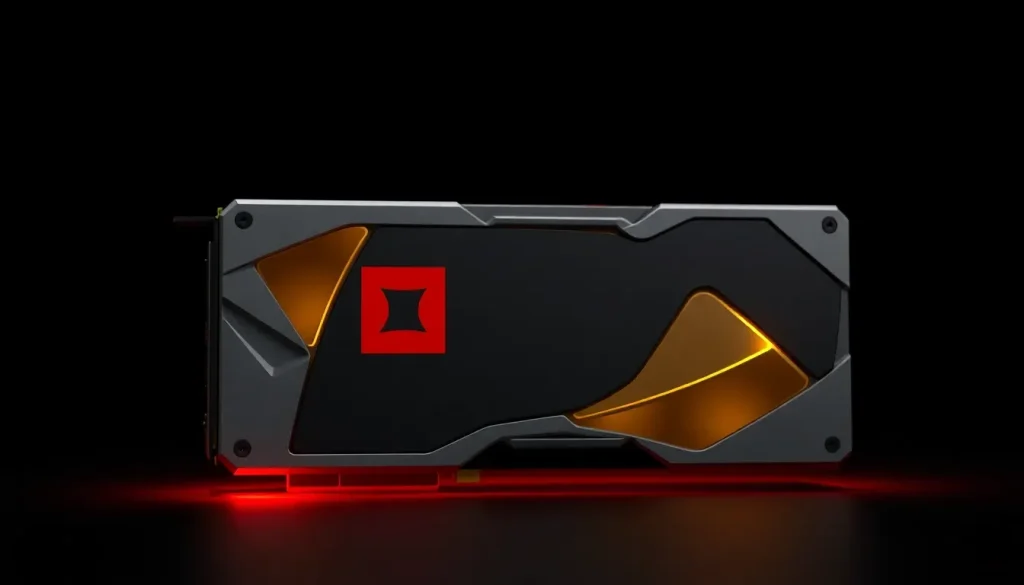AMD gains market share from NVIDIA with RX 9000 in Australia

In the competitive landscape of graphics processing units (GPUs), NVIDIA has long held the upper hand, dominating the market with its innovative technology and robust performance. However, recent trends indicate a potential shift, especially in key regions like Australia. AMD's latest series of GPUs, the Radeon RX 9000, has made significant inroads, challenging NVIDIA's longstanding supremacy. This article delves into the current state of the GPU market, exploring the factors behind AMD's rise and what it means for consumers and the industry at large.
- AMD achieves over 40% market share of GPUs in Australia with the Radeon RX 9000
- Sales trends reveal RX 9000 outperforming RTX 50 models
- Understanding the competitive landscape: AMD vs. NVIDIA
- The implications of AMD's rise in market share
- Consumer choices: Why are buyers leaning towards the RX 9000 series?
- The future of the GPU market
The Australian GPU market has witnessed a remarkable shift, as AMD's Radeon RX 9000 series has captured a substantial 44% of total sales. This marks a significant accomplishment for AMD, especially considering that NVIDIA has historically dominated with over 80% of the market share in gaming GPUs. Many industry analysts have noted that this trend reflects changing consumer preferences, with AMD's competitive pricing and performance finally resonating with buyers.
Recent reports from Hardware Unboxed indicate that while NVIDIA still holds a commanding 56% of the market, the growing popularity of the RX 9000 series suggests that AMD is making serious headway. This shift is particularly noteworthy given that NVIDIA's latest RTX 50 series has not received overwhelming acclaim.
As consumers become more discerning and prioritize value for money, AMD's strategy of delivering high-performance GPUs at competitive prices seems to be paying off. Furthermore, the RX 9000 series offers features that appeal to a broad range of gamers, from casual players to hardcore enthusiasts.
Sales trends reveal RX 9000 outperforming RTX 50 models
In the past six months, several reports from Australian retailers have highlighted a significant trend: the RX 9070 XT has sold 200% more than NVIDIA's RTX 5070 Ti, and the RX 9060 XT has outperformed the RTX 5060 Ti by 100% in the same timeframe. These figures indicate that AMD's latest offerings are not only popular but are also reshaping the competitive landscape.
Interestingly, the RX 9070 has also seen a 70% increase in sales compared to the RTX 5070. This data is a critical indicator of consumer sentiment and the effectiveness of AMD's marketing strategies. However, it is essential to note that these sales peaks occurred primarily during the launch phase, and AMD's sales momentum may fluctuate as the market stabilizes.
Despite these promising figures, there remains a disparity between retail sales and actual usage statistics on platforms like Steam. The most commonly used AMD graphics cards still include the RX 6600, which commands only 0.92% of the total GPU market share on Steam.
Understanding the competitive landscape: AMD vs. NVIDIA
The rivalry between AMD and NVIDIA dates back decades, with both companies continuously striving to outdo each other. Historically, NVIDIA has leveraged exclusive technologies like DLSS (Deep Learning Super Sampling) and advanced driver support to maintain its market share. In contrast, AMD has focused on providing robust performance at more accessible price points.
- NVIDIA's strengths: Proprietary technologies, superior driver support, and established market presence.
- AMD's strengths: Competitive pricing, strong performance in specific benchmarks, and increasing brand loyalty.
- Market trends: Growing consumer interest in AMD's RX series, reflecting a desire for value without sacrificing performance.
As the GPU market evolves, both companies are likely to continue adapting their strategies in response to shifting consumer preferences and technological advancements.
AMD's recent success in Australia could have far-reaching implications across the gaming and tech industries. With a larger market share, AMD may increase its investments in research and development, leading to more innovative products in the future. This could further intensify competition between AMD and NVIDIA, ultimately benefiting consumers with better products and pricing.
Additionally, as AMD gains traction, we may see more retailers and vendors prioritize their products over NVIDIA's, especially in regions where AMD has established a strong foothold. This shift can foster a more balanced market, encouraging both companies to push the boundaries of technology.
Consumer choices: Why are buyers leaning towards the RX 9000 series?
Several factors contribute to the growing preference for AMD's RX 9000 series among consumers. These include:
- Price-to-performance ratio: AMD's GPUs often offer similar or superior performance at a lower cost.
- Feature set: The RX 9000 series includes several advanced features that cater to modern gaming needs.
- Brand loyalty and reputation: AMD's efforts in recent years to improve their driver support and customer service have positively impacted consumer perception.
As buyers become more informed and seek products that provide value, AMD's approach appears to resonate well with a broader audience.
To gain further insight into AMD's competitive positioning and strategies, check out this informative video:
The future of the GPU market
The ongoing competition between AMD and NVIDIA is likely to shape the future of the GPU market significantly. As both companies strive for innovation, consumers can expect to see:
- Enhanced performance: Continued improvements in GPU capabilities, including better ray tracing and AI integration.
- Competitive pricing: Increased pressure on NVIDIA to lower prices or offer more competitive value propositions.
- Diverse product offerings: A wider range of GPUs catering to various segments, from budget to high-end gaming.
Ultimately, the battle for market share will not only determine which company leads the industry but will also influence the technology landscape for years to come.




Leave a Reply